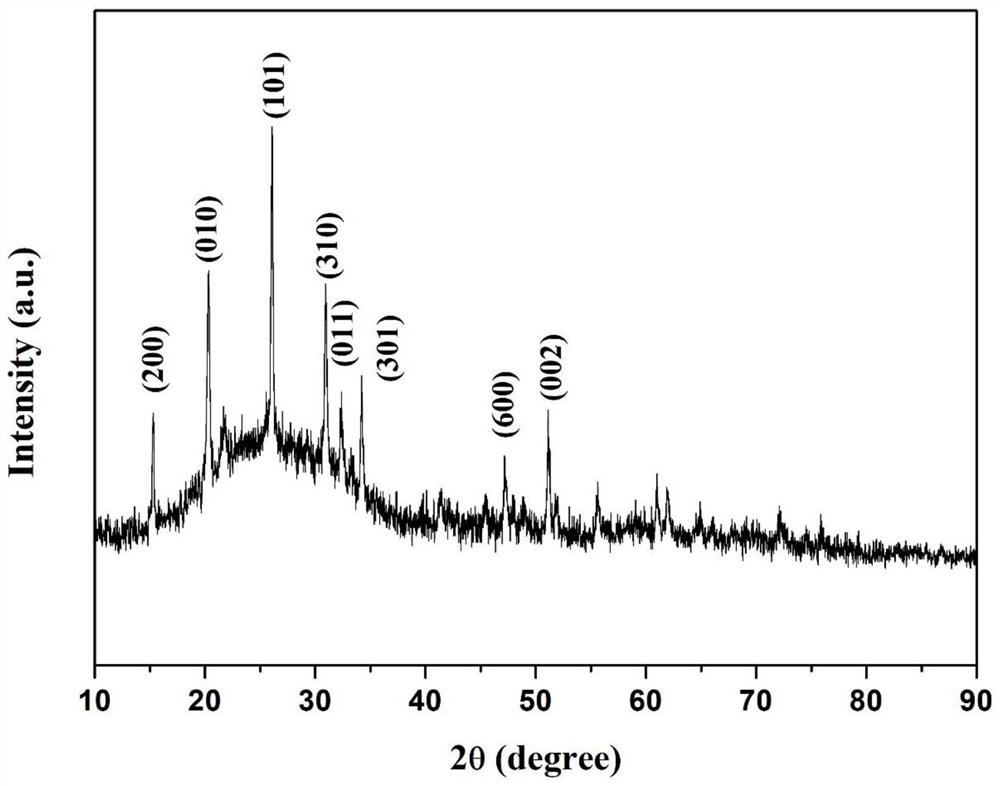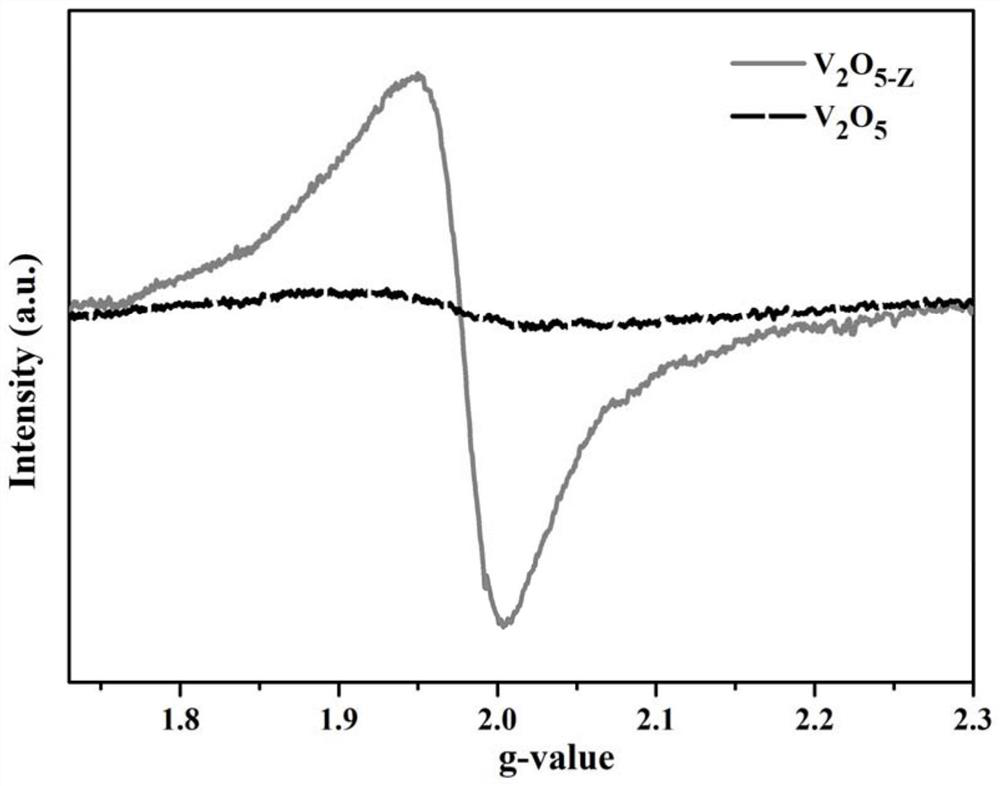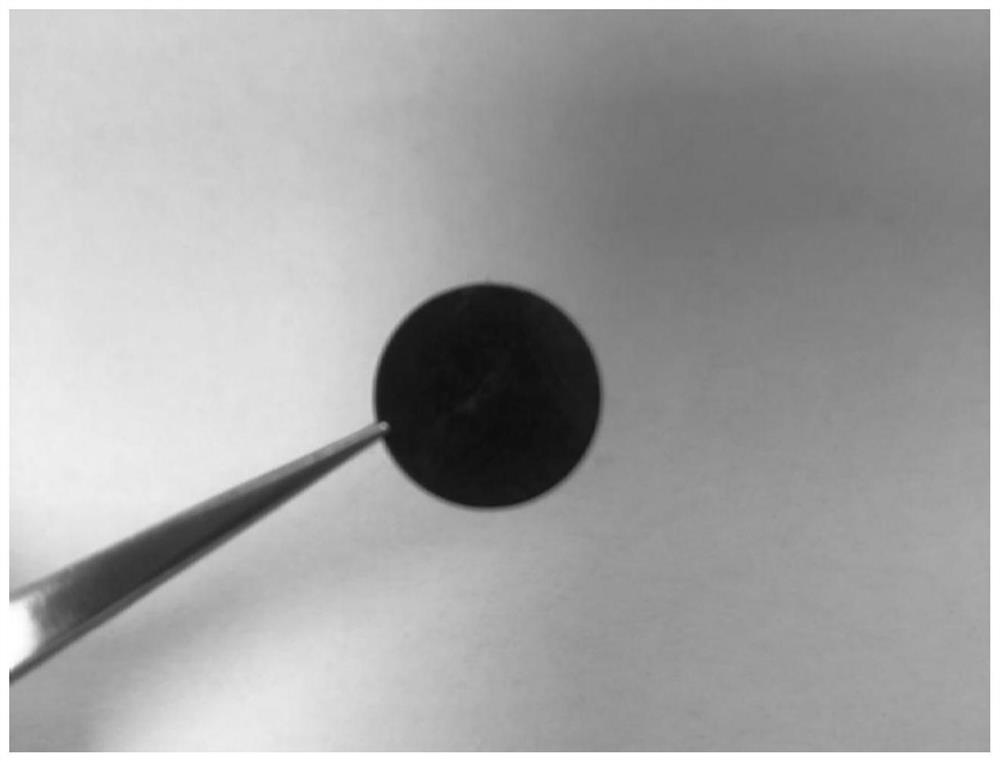Binder-free oxygen-defect-containing carbon-coated oxide electrode and battery
A binder-free, oxide-free technology, applied in battery electrodes, secondary batteries, circuits, etc.
- Summary
- Abstract
- Description
- Claims
- Application Information
AI Technical Summary
Problems solved by technology
Method used
Image
Examples
Embodiment 1
[0033] In this embodiment, a carbon-coated V containing oxygen defects 2 o 5-Z Electrode, the preparation method is as follows:
[0034] Ammonium metavanadate is selected as the reactant, and water is used as the solvent. Weigh 1g of ammonium metavanadate into a beaker, add 100mL of water, adjust the pH value of the mixed solution to 4 with hydrochloric acid, place the titanium foil in the mixed solution and transfer it to the reaction vessel, and keep it at 150°C for 6h. After natural cooling, the titanium foil was collected, washed repeatedly with deionized water, and dried in vacuum for 10 h. Finally, the titanium foil was calcined at 700 °C for 2 h in a 5% acetylene / argon atmosphere to obtain carbon-coated V with oxygen defects. 2 o 5-Z Material.
[0035] The electrode of this embodiment is made of titanium foil current collector and active material V 2 o 5-Z composition, the active material grows directly on the surface of the current collector, Figure 5 It can be...
Embodiment 2
[0037] The difference between this embodiment and embodiment 1 is;
[0038] Select ferrous sulfate as reactant, water as solvent. Weigh 1.5g of ferrous sulfate into a beaker, add 150mL of water, adjust the pH value of the mixed solution to 5 with sulfuric acid, place the titanium foil in the mixed solution and transfer it to the reaction vessel, and keep it at 180°C for 10h. After natural cooling, the titanium foil was collected, washed repeatedly with deionized water, and dried in vacuum for 10 h. Finally, the titanium foil was calcined at 650 °C for 4 h in a 5% acetylene / argon atmosphere to obtain carbon-coated Fe with oxygen defects. 2 o 3-Z Material.
experiment example 3
[0040] The difference between this embodiment and embodiment 1 is;
[0041] Select tin chloride as the reactant and water as the solvent. Weigh 1.2g of tin chloride into a beaker, add 150mL of water, adjust the pH value of the mixed solution to 6 with acetic acid, place the titanium foil in the mixed solution and transfer it to a reaction vessel, and keep it at 200°C for 12h. After natural cooling, the titanium foil was collected, washed repeatedly with deionized water, and dried in vacuum for 10 hours. Finally, the titanium foil was calcined at 550 °C for 6 hours in a 5% acetylene / argon atmosphere to obtain carbon-coated SnO with oxygen defects. 2-Z Material.
PUM
 Login to View More
Login to View More Abstract
Description
Claims
Application Information
 Login to View More
Login to View More - R&D
- Intellectual Property
- Life Sciences
- Materials
- Tech Scout
- Unparalleled Data Quality
- Higher Quality Content
- 60% Fewer Hallucinations
Browse by: Latest US Patents, China's latest patents, Technical Efficacy Thesaurus, Application Domain, Technology Topic, Popular Technical Reports.
© 2025 PatSnap. All rights reserved.Legal|Privacy policy|Modern Slavery Act Transparency Statement|Sitemap|About US| Contact US: help@patsnap.com



